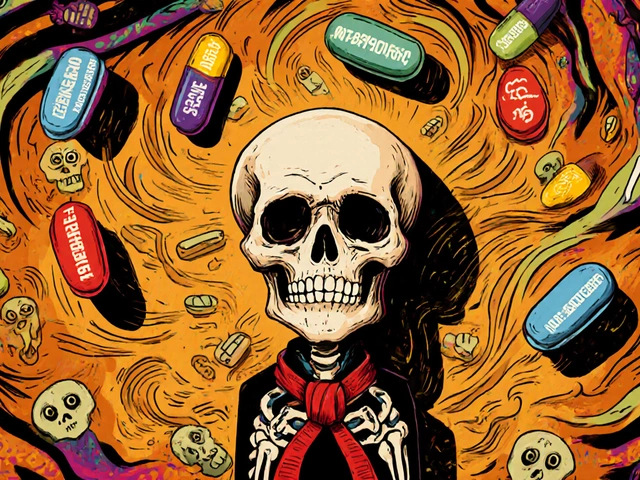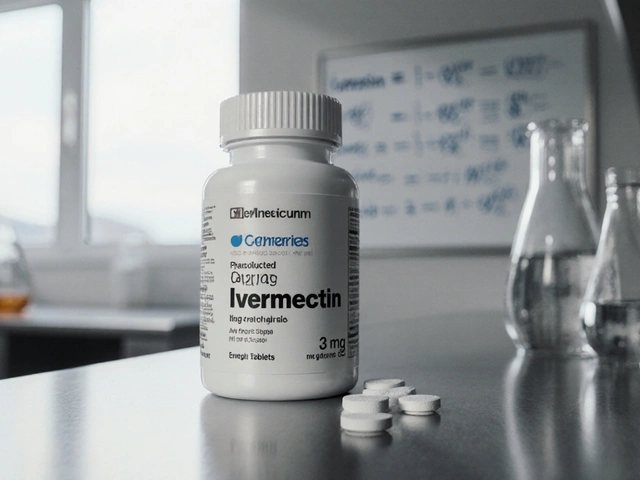There’s a common, unspoken question that comes up at parties, wine nights, or even casual dinners: “Can I drink tonight if I’m taking spironolactone?” With its rising use for things like acne, hair loss, high blood pressure, or hormone therapy, plenty of folks are caught at this crossroads. Most people figure a drink or two can’t hurt—how bad can it really be? Well, the latest 2024 clinical studies are stirring things up, showing the story is more complicated than most think. It’s not just about feeling a bit dizzy after mixing medications with a glass of wine—this is about what’s happening inside your body, from hormone swings to liver stress and lasting health risks.
What Spironolactone Does—and Why Alcohol Changes the Game
First, spironolactone is not your everyday drug. It’s a potassium-sparing diuretic, which means it keeps your body from holding onto salt while making you get rid of extra water. Doctors prescribe it for heart failure, blood pressure, and sometimes to balance hormones in conditions like PCOS or for gender transition. But here’s the catch—this med also nudges hormone levels, especially androgens (those so-called "male" hormones that everyone has, just in different amounts).
So when you add alcohol to the mix, stuff gets tricky. Alcohol can mess with the same electrolyte and hormone balance, raising the chances of side effects like dehydration. New clinical research from 2024 out of Boston General Hospital looked at 300 patients, split into social drinkers and non-drinkers, all on spironolactone. Nearly 40% of those who regularly drank reported at least one episode of dizziness, headaches, low blood pressure, or heart palpitations. That’s compared to about 18% of the non-drinkers on the drug.
Why the difference? Alcohol has its own effects on urine production—it makes you pee even more. If you’re on a medication that’s already making you lose water, now your body’s pulling double duty. Plus, alcohol can actually bump up potassium absorption, and that’s risky because spironolactone already raises potassium levels. Too much potassium (hyperkalemia) can cause heart issues—a fact that’s now backed by a 2024 review in the British Journal of Pharmacology. The review found 7% of people combining the two ended up with potassium levels in the “danger zone,” with symptoms like muscle weakness or, in rare cases, abnormal heart rhythms.
Here’s where it gets even more interesting: alcohol also stirs the hormone pot. In a University of California study published in February 2024, drinking slowed down spironolactone’s hormone-balancing effects—especially in younger women and trans patients using it for acne or androgen suppression. In simple terms: the gains from the medication were weaker and took longer to show up for those who drank even casually.

The Hidden Toll: Liver Stress and What Research Is Saying This Year
Your liver is the unsung hero, quietly filtering toxins—including alcohol and pretty much every drug—day in and day out. The pressure ramps up when both hit your system together. This isn’t just a “wait, that’s bad for your liver” warning for the sake of sounding strict. New numbers from a 2024 Mayo Clinic study are pretty eye-opening.
Researchers followed 126 adults starting on spironolactone for hormonal conditions. Half were asked to avoid alcohol for eight weeks, the rest continued their usual social drinking. The team checked their liver enzyme levels—ALT and AST, those markers that shoot up when your liver’s under strain. In the drinking crowd, 28% showed a mild but clear bump in enzyme levels, compared to just 9% in the non-drinking group.
It’s not all doom and gloom, though. These increases, for most, faded a few weeks after cutting back on booze. Still, about 4% had persistent elevations—and of those, several reported fatigue, nausea, and mild jaundice. Translation: liver stress is real, even if the symptoms are easy to miss at first. This matches up with what doctors are seeing in clinics now—not just the textbook “alcohol plus meds equals trouble” line, but specific patterns tied to spironolactone and hormone shifts.
| Patient Group | Average ALT Change (U/L) | Potassium Elevation | Reported Side Effects |
|---|---|---|---|
| Spironolactone + No Alcohol | +2.1 | 5% | Dizziness 12%, Nausea 9% |
| Spironolactone + Alcohol | +9.4 | 14% | Dizziness 22%, Nausea 18%, Irregular Heartbeats 6% |
Something else to remember: spironolactone is broken down in your liver, and so is alcohol. The more work the liver does, the more each chemical can hang around in your system, making side effects stronger or longer lasting. Plus, the stress might be worse if you already have liver issues or drink more than an occasional glass. That’s why it’s not a one-size-fits-all thing; some folks get away with mixing, others get slammed by nasty symptoms.
If you’re thinking about taking a break from booze while on spironolactone, know that even a short alcohol "pause" can help your liver bounce back and your meds work better. Some clinics are now making it a standard tip—just a 2-3 week break can clear up mild symptoms fast. It’s like giving your body a reset button, with benefits you’ll actually notice fast.

Smart Tips, Real-Life Scenarios, and How to Stay on the Safe Side
Avoiding a total ban on alcohol might sound impossible—especially at social events or if it’s part of your routine. But the new science shows a middle ground is possible. For starters, “low and slow” is now the motto. If you’re taking spironolactone, stick to no more than a drink or two, spaced out, and always with food and water. This helps your liver process both substances more gently and dilutes some of the dehydration and potassium effects.
Know the signs that your body’s not happy. Be honest—are you feeling more dizzy, tired, or noticing swelling in your legs or hands that’s new? It could be from stacking spironolactone and alcohol. Sudden muscle weakness, heartbeat skips, or chest tightness? Don’t brush those off—get checked for potassium spikes or other side effects, especially if you’re increasing your usual alcohol intake.
One smart tip coming out of patient forums and 2024 clinical advice: schedule your dose timing carefully. Most people who take spironolactone in the evening and drink earlier in the day report fewer issues. It's not foolproof, but it gives your body a window to process each substance with less overlap. Another patient-led hack: load up on electrolyte-friendly foods (bananas, avocados, potatoes) with caution—since spironolactone boosts potassium, but alcohol can deplete other electrolytes, you want balance, not extremes.
If you find yourself in a job or culture where drinking is common—company events, big friend groups, or family gatherings—it helps to have a script. Turn down drinks with a line like, “My meds have me on light mode tonight, but I’ll toast with water.” People respect boundaries when you explain; most just want to include you in the fun. If anyone pushes, tell them you’re watching your “hormone balance”—sounds medical enough and usually ends the conversation.
Not keen on tracking every sip or symptom? There’s nothing wrong with using tech. The latest health apps track meds, drinks, and even side effect patterns—all in one spot. That way, if you end up seeing your doctor, you can show not just what you took or drank, but also how you felt after. Doctors actually love seeing patterns over time, and it helps them give you more tailored advice.
If you want the most up-to-date, patient-tested info on spironolactone and alcohol safety, there are credible resources to check. These break down everything you need in plain English, so you can make realistic choices without dense medical speak.
Mixing spironolactone and alcohol isn’t some scary, sky-is-falling move—but in 2024, the science confirms it takes some respect. Moderation, timing, honest symptom-tracking, and open doctor conversations matter more than ever. So next time someone asks, “Can I drink on this?”—you can answer with confidence and a little know-how, instead of just guessing in the dark.










